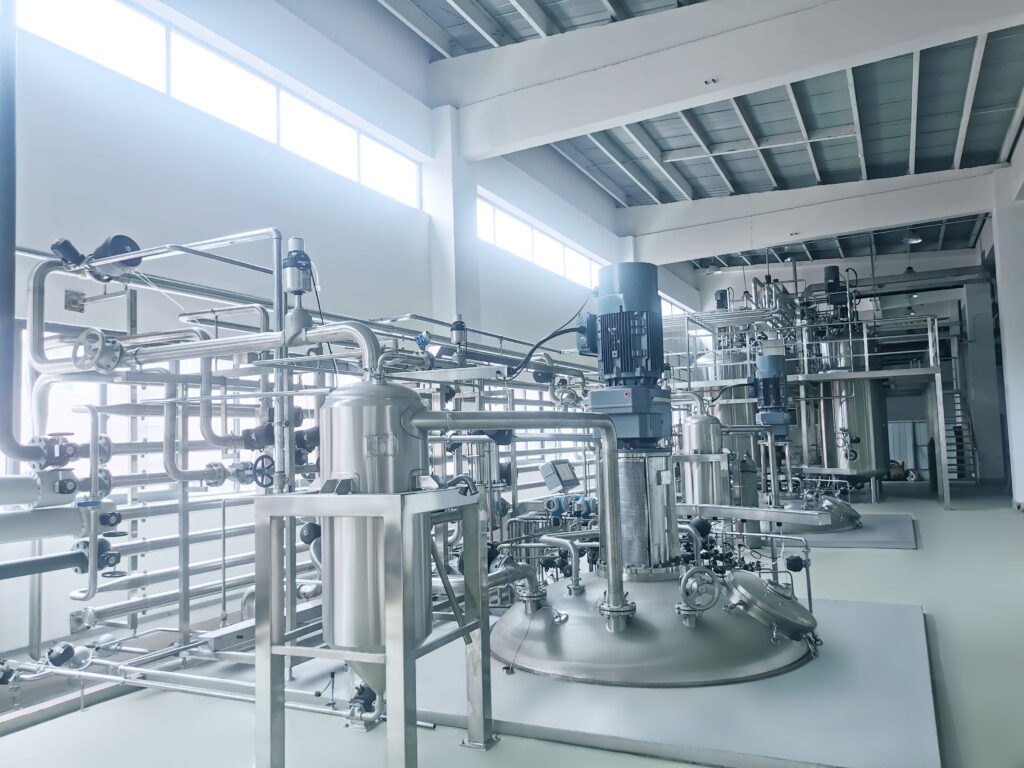
Advanced advancements in biofuels, medications, and even cosmetics are also a result of fermentation. So, fermentation has impacted your life in more ways than you may think, regardless of whether you’re a foodie, scientist, or someone trying to lessen your carbon footprint.
It significantly impacts our world, whether it is through the creation of your favorite beverage or the advancement of medicine. So in this post, we’ll look at 15 amazing uses for fermentation, all of which highlight the process’s remarkable adaptability and significance.
But first;
What is Fermentation?
Fermentation is a process of metabolism where microbes transform sugars or other organic molecules into a range of compounds, including alcohol, acids, and gases.
Although it is a naturally occurring process, people have discovered ways to manipulate and control it for their own gain, leading to various applications in sectors as diverse as environmental management, food, medicine, and energy.
The 15 Applications and Use of Fermentation
Fermentation is affecting our lives today in ways we had never imagined, from the fermented pharmaceuticals that you may be taking to consuming probiotic meals for wellness benefits.
Therefore, we will take a look at 15 different and momentous applications of fermentation in many sectors in order to show how this ancient process is still benefiting us.
1. Food Preservation
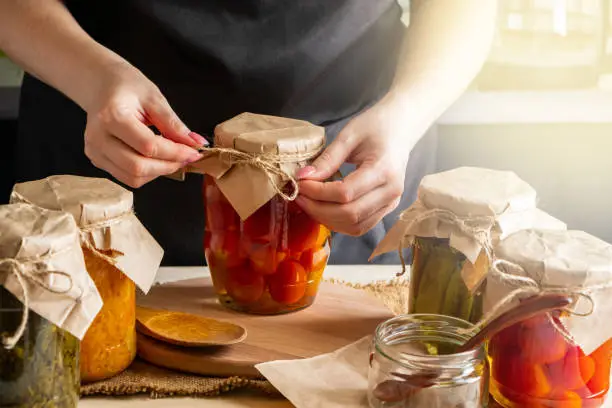
Even before refrigeration, humans used fermentation a long time ago to store food. Fermentation inhibits the harmful bacteria that cause food to go bad, thus providing a longer shelf life.
Consider kimchi, for instance. Fermenting vegetables like cabbage in a brine of garlic, ginger, and chili peppers creates this fiery Korean mainstay. The fermentation process gives the cabbage a unique tangy flavor in addition to extending its shelf life. Similar to pickles and sauerkraut, these foods are preserved and given their distinctive sour flavor through lactic acid fermentation, in which good bacteria turn sugars into lactic acid.
Fermentation improves food’s flavors, textures, and nutritional value and extends its shelf life. Foods that are fermented and rich in vitamins, minerals, and beneficial bacteria that support intestinal wellness are frequently more nutrient-dense than their raw counterparts. For this reason, fermented foods like tempeh, miso, and fermented fish are part of traditional diets all over the world.
2. Alcohol Production
And when you think of fermentation, the first thing that comes to your mind is alcohol. For thousands of years, fermentation has been at the core of all forms of alcohol, from wine and beer to whiskey and vodka. So, how does fermentation result in alcohol? By yeast converting sugars to carbon dioxide and alcohol.
The fermentation process makes different drinks. It makes wine by fermenting grapes and makes beer from barley. Yeast is added in both situations to convert the grain or fruit’s carbohydrates into carbon dioxide and alcohol. In wine, the carbon dioxide escapes into the atmosphere, but in beer, it is retained, giving the beverage its distinctive fizz.
The alcohol concentration of spirits like whiskey and rum accumulates through distillation, which starts as fermented liquids.
For centuries, fermentation has been an essential component of human civilization, culture, and even social rituals. It is the fundamental process that enables the production of alcohol.
3. Yogurt and Cheese
Fermentation is another essential component of the dairy industry, which yields a range of cheeses, kefir, and yogurt. But what is fermentation’s role in dairy products? With the help of good bacteria like Bifidobacterium and Lactobacillus, lactose, the sugar in milk, turns into lactic acid. This lactic acid gives fermented dairy products their unique tangy flavor and thickens the milk.
For instance, to make yogurt, milk is heated to eradicate any undesirable bacteria before you add particular strains of good bacteria to ferment the lactose. The milk turns into a thick, creamy product that is full of probiotics, which are excellent for gut health, in a matter of hours. Kefir is the same, but it contains a wider variety of microorganisms, which makes the finished product more tangy and bubbly.
In contrast, cheese is the product of a more intricate fermentation process. Here, there’s curdling of milk by bacteria and, at times, molds, which develops its flavor. Remember, the type of bacteria, the duration of fermentation, and the conditions under which the cheese is aged all affect the final product’s texture and flavor. This includes soft, fresh cheeses like ricotta to aged, hard cheeses like cheddar and parmesan.
4. Baking
You have witnessed fermentation if you have ever made bread from scratch. To make bread, you use yeast, which is a microbe that ferments the sugars in flour and releases carbon dioxide, which is why bread rises. The dough expands due to this trapped gas, giving bread its fluffy texture.
Now, in baking, what does fermentation do? It provides bread with structure and lift and needs to be soft and fluffy. Sourdough bread is a prime example of fermentation, much to the delight of carb lovers. It has lactic acid bacteria and wild yeast obtained from the flour and air, while the normal bread undergoes baking with commercial yeast. The lactic acid bacteria add a distinct sour flavor, while the wild yeast ferments the sugars more gradually than commercial yeast. The end product is a long-lasting loaf with a unique flavor and chewy texture.
Interestingly, fermentation not only causes the dough to rise while baking but also makes the bread taste better and easier to digest. We also understand that some gluten proteins are damaged by fermentation, so those with sensitive stomachs should consider consuming long-fermented sourdough bread.
5. Pharmaceuticals
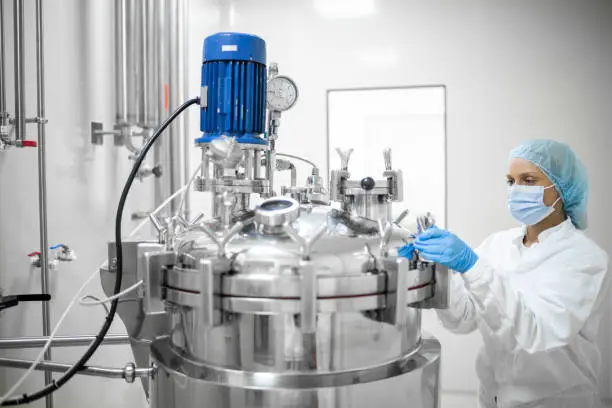
Beyond food and beverages, fermentation is an essential procedure in the pharmaceutical sector. Researchers and pharmacists use fermentation in the production of many life-saving medications, such as insulin and antibiotics like penicillin. In this context, what is fermentation doing? It cultivates cell cultures or microorganisms that yield significant medicinal compounds.
For instance, the mold Penicillium is fermented to produce penicillin, the first antibiotic ever found. The mold creates the antibiotic substance during the fermentation process, and it is subsequently extracted and refined for use in medicine. In a similar vein, genetically modified bacteria are now frequently used to ferment insulin, a hormone used to treat diabetes.
The manufacturing of vaccines, including those for illnesses like HPV and hepatitis B, has also been transformed by fermentation technology. Pharmaceutical firms can mass-produce the proteins required for vaccines by fermenting genetically modified cells. Because of this, vaccines can now be produced in large quantities, increasing their accessibility and affordability for people everywhere. A stainless steel bioreactor fermentor is one of the tools used in this process.
6. Biofuels
Beyond food and medicine, fermentation plays a significant role in the creation of renewable energy. Why is fermentation taking place here? As a cleaner substitute for fossil fuels, it converts plant-based materials into biofuels like ethanol.
Fermenting sugars from crops like corn, sugarcane, or even agricultural waste yields ethanol. Yeast converts the carbs into alcohol during fermentation. It then distils to produce ethanol. By mixing this ethanol with gasoline, a more environmentally friendly fuel can be produced, lowering greenhouse gas emissions and reliance on oil.
Also, fermentation-based biofuel production is a burgeoning sector essential to addressing the global energy and climate crises. As technology develops, scientists are even investigating methods for using fermentation to create butanol and other biofuels that may eventually take the place of jet fuel and diesel.
7. Coffee and Chocolate
It may surprise you to hear that chocolate and coffee both use fermentation to create their deep, nuanced flavors. Coffee cherries go through a fermentation process after harvesting in order to extract the outer pulp and let the beans dry. In this instance, what is fermentation doing? It improves the flavor of the coffee beans by breaking down the fruit’s sugars and other substances.
Similarly, after being harvested, cacao beans—which are used to make chocolate—ferment. The beans are piled high and allowed to ferment for a few days during this process. The seeds are killed by the heat produced during fermentation, and the bacteria and yeast break down the sugars in the pulp around the beans. The development of the flavor precursors that will be released during roasting and give the chocolate its distinctive flavor depends on this step.
Coffee and chocolate wouldn’t have the rich flavor that makes them so popular worldwide if fermentation didn’t occur.
8. Vinegar Production
Another byproduct of fermentation that goes a step further is vinegar. The sharp, tangy flavor of vinegar is caused by acetic acid bacteria, which take over after fermentation, produce alcohol, and turn it into acetic acid. Why is fermentation taking place here? It converts ethanol to acetic acid, the second step of the process.
Different base ingredients are used to make different kinds of vinegar. For instance, apple juice is fermented to make cider, which is subsequently fermented to vinegar to create apple cider vinegar. After a protracted fermentation and aging process, the grape becomes balsamic vinegar and gradually develops a deep, nuanced flavor.
Vinegar has many uses, from culinary applications like marinades and salad dressings to household cleaning and even medical treatments. This adaptable fermented product gains additional usefulness due to its strong antibacterial and preservative properties due to its acidic nature.
9. Probiotics
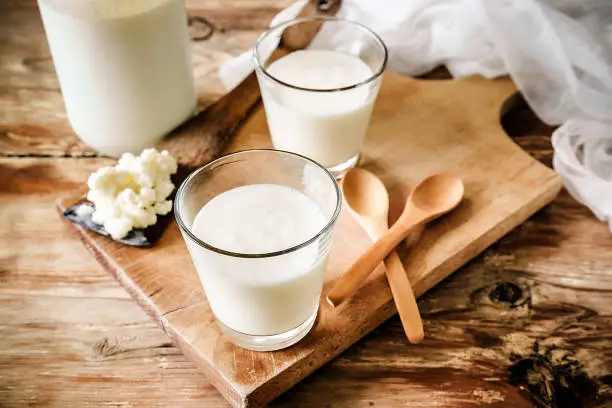
Probiotics, which are active bacteria and yeasts, provide several health advantages, especially for the digestive system. Probiotics are abundant in fermented foods such as yogurt, kimchi, sauerkraut, and kefir. These advantageous microbes support a balanced gut flora, which enhances immunity, improves digestion, and even has an impact on mental health. In this instance, what is fermentation doing? It’s establishing an organic setting in which probiotics can flourish.
Consuming fermented foods can help you improve your gut health by introducing good bacteria that can outcompete harmful pathogens. For those with digestive disorders like inflammatory bowel disease (IBD) or irritable bowel syndrome (IBS), this is especially crucial.
The probiotic market has exploded in recent years, and probiotic-enhanced foods and supplements are growing in popularity. However, one of the greatest and most convenient ways to get good bacteria is through naturally fermented foods.
10. Soy Products
One of the most popular condiments in the world, soy sauce, is made by a complicated fermentation process that includes both bacteria and yeast. The end product is a savory, salty, and rich liquid that enhances the flavor of a wide range of foods.
Well, fermented foods made from soy are staples in many Asian cultures. Fermentation is used to make tempeh, miso, natto, and soy sauce, each of which has a distinct flavor and set of health advantages. What is the process of fermentation in soy products? Their nutritional profile, flavor, and digestibility are all being improved.
For instance, a particular kind of mold is used to ferment soybeans to create tempeh. Compared to non-fermented soybeans, tempeh is easier to digest and more nutrient-dense. Why? Because the fermentation process breaks down the phytic acid in soybeans, which can prevent the absorption of minerals. Miso, another fermented soybean paste, is a tasty and nutritious addition to soups and sauces because it is high in probiotics and has a strong umami flavor.
11. Kombucha
Because of its possible health advantages, kombucha, a fermented tea beverage, has become increasingly popular in recent years. Kombucha is produced by double fermenting sweetened tea with a SCOBY (symbiotic culture of bacteria and yeast). What does kombucha fermentation entail? Kombucha gets its tangy flavor and fizzy texture from the fermentation of the sugars into alcohol, which is subsequently fermented into acids.
Probiotics, antioxidants, and organic acids are abundant in kombucha, which may help with detoxification and gut health. Many people swear by kombucha as a refreshing and health-promoting beverage, even though the scientific evidence supporting some of its purported health benefits is still developing.
The kombucha market has exploded with innumerable brands and flavors ranging from hibiscus and berry to ginger and lemon. With the correct ingredients, it’s also simple to make at home, enabling fermentation enthusiasts to create unique flavor combinations.
12. Biodegradable Plastics
Scientists use fermentation to create biodegradable plastics as worries about plastic pollution continue to rise. Biopolymers such as polylactic acid (PLA), which can be utilized to create biodegradable plastic products used in thread lifts and the beauty industry, can be produced by certain bacteria fermenting sugars or plant-based materials.
Why is fermentation taking place here? It offers a sustainable substitute for conventional plastics made from petroleum.
A wide range of products, including 3D printing materials and disposable cutlery and packaging, are already made with PLA. PLA biodegrades faster and is compostable in industrial settings, in contrast to conventional plastics, which can take hundreds of years to decompose.
One promising step in lowering plastic waste and building a more sustainable future is the use of fermentation to create biodegradable plastics. In order to create bioplastics that are long-lasting and eco-friendly, researchers are still looking for innovative methods to improve the fermentation process.
13. Meat Alternatives
Fermentation has taken on a new role in the creation of meat substitutes as plant-based diets and worries about the environmental effects of meat production have grown in popularity. In this context, what is fermentation doing? It is being used to produce plant-based proteins that have flavors and textures similar to those of actual meat.
Traditional plant-based proteins like tempeh are already made through fermentation, but it’s also being used in fresh and creative ways. Businesses such as Beyond Meat and Impossible Foods produce the “heme” protein that gives their plant-based burgers a meaty taste through fermentation. Furthermore, some businesses are creating proteins derived from fermentation that can be added to a range of plant-based dishes.
So, fermentation is a sustainable alternative to animal agriculture’s environmental impact for producing high-protein foods. Fermentation will probably become more significant in the creation of new products as the market for meat substitutes keeps expanding.
14. Waste Management
Fermentation can be used as an efficient waste management strategy for food and fuel production. Anaerobic digestion – a fermentation that happens without oxygen breaks organic waste down into biogas (a mix of carbon dioxide and methane). But how is fermentation used in the disposal of waste? It decomposes waste materials and produces renewable energy.
Not surprisingly, anaerobic digestion is also widely used for agricultural waste treatment and as a decentralized form of wastewater treatment. Also, it’s increasingly utilized to process food scraps in both municipal and industrial contexts. This organic material can be used to create compost in agriculture, while the biogas produced is typically burnt and used as a source of heat or electricity.
This kind of fermentation produces a renewable energy source, reduces greenhouse gas emissions, and lessens the quantity of waste that is dumped in landfills. It’s a solution that benefits sustainability and waste management.
15. Perfume and Cosmetics
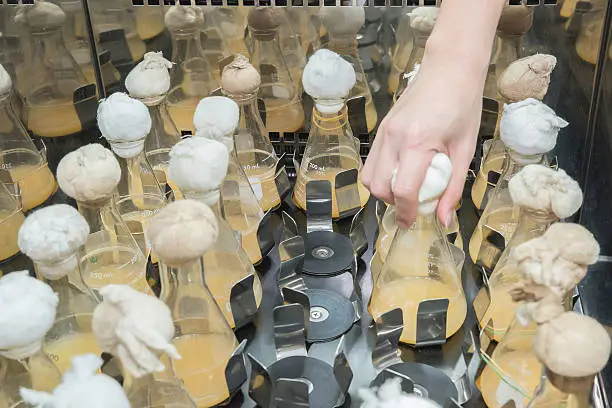
Surprisingly, even today, fermentation has crept into the personal care and cosmetics industry. To enhance their functionality and aroma, some fermented items, such as shampoos and scents, are applied in cosmetology.
So, what role does fermentation play in makeup? It breaks down ingredients into smaller, more bioavailable molecules, facilitating easier absorption by the skin and hair.
Since fermentation increases the amount of beneficial compounds such as vitamins, antioxidants, and amino acids, fermented skincare products are presumed to give better moisturizing and anti-aging properties.
Next time you check the label on a serum, a cream, a shampoo, or a conditioner, you might find that it contains fermented rice water, yeast extracts, and fermented botanicals.
Moreover, some natural fragrances in perfume make use of the process of fermentation. A case of these include musk fragrances derived from animal-free ingredients; plant-based materials are fermented to produce the scents.
Conclusion
What is fermentation? Fermentation is one of the most adaptable and transformative processes in nature, with applications ranging from food preservation to renewable energy and life-saving medications. This straightforward yet potent biological process has molded human civilization for thousands of years and is still essential to contemporary industry and technology.
Fermentation is positioned to continue playing a significant role in our world, whether by assisting in developing sustainable materials, enhancing human health, or lowering our dependency on fossil fuels. So the next time you apply your favorite skincare product, eat a slice of sourdough bread, or drink a glass of wine, stop and think about the amazing fermentation process that made it all possible.
Are You Prepared to Harness Fermentation’s Power?
Look no further than Bailun Biotechnology if you want to improve your fermentation process for the production of food, medicines, or biofuel. We provide everything you need to fully realize the promise of fermentation in your sector, including top-of-the-line fermentors built for accuracy, effectiveness, and scalability.
Explore our selection of fermentors designed to meet your unique requirements by contacting Bailun Biotechnology right now!
Use state-of-the-art fermentation technology to get started right now!

